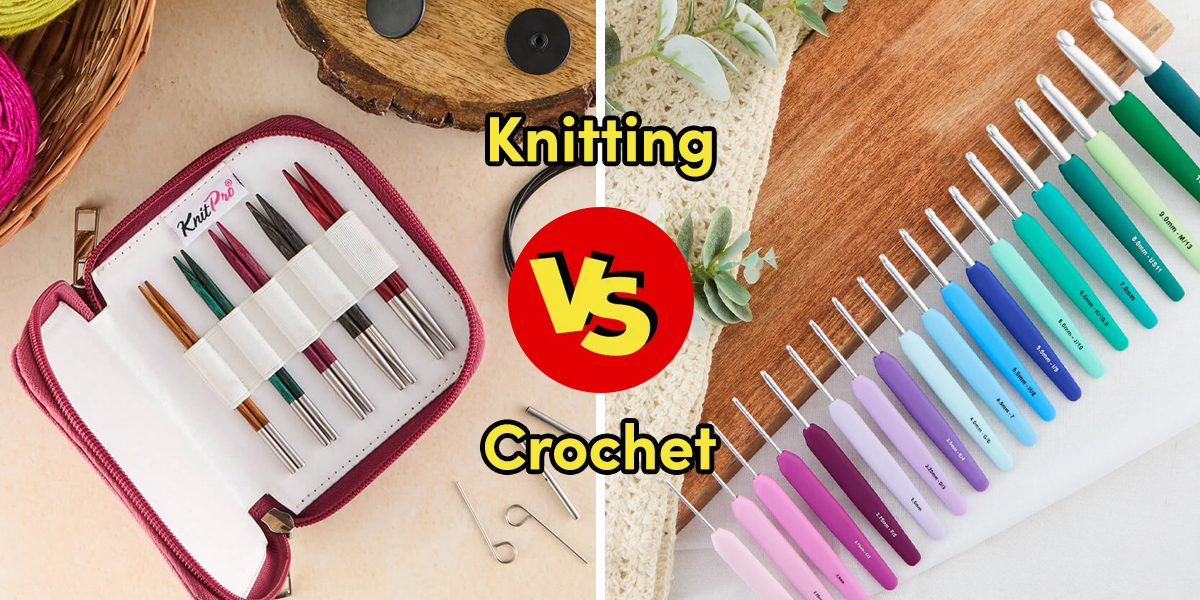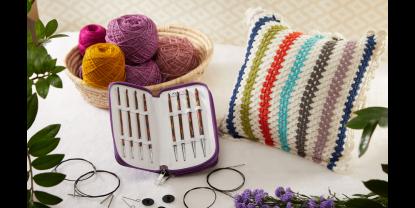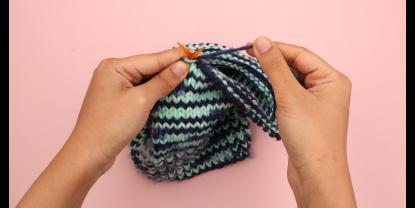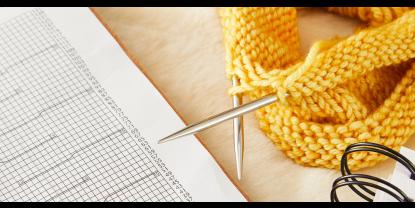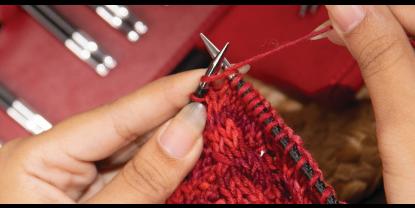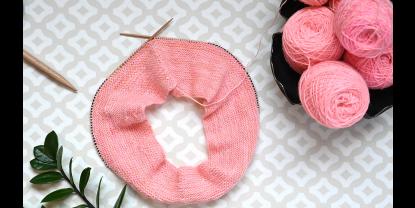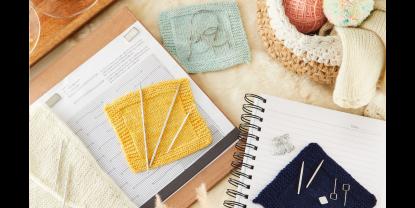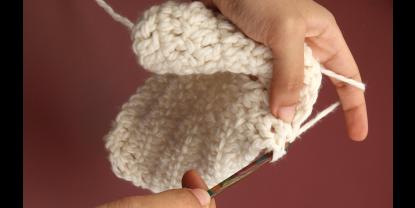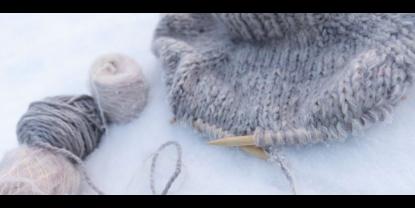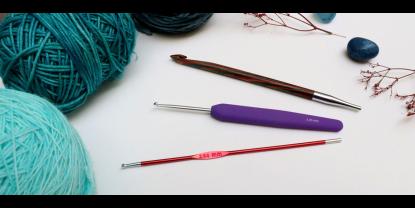It’s sweater weather again! Fall is here and will be followed by winter making it the time to dress up in sweaters. Knitted or crocheted, handmade sweaters are cozy, offer unique possibilities and come with their own set of advantages and challenges. So, whether you are skilled with knitting needles and sweater construction or a crocheter skilled with crochet hooks, you can create sweaters anyway.
Gone are the days when knitting was for sweaters and crochet for lace doilies and home décor. With more and more creative patterns coming up, from crocheted lace sweaters to bulky knits there’s a lot more to explore. In fact, there are also patterns that include both. In this blog, let’s explore knit and crochet sweaters, and weigh their pros and cons to help you decide which method suits your needs, skills, and preferences.
The Basics of Knitting and Crocheting
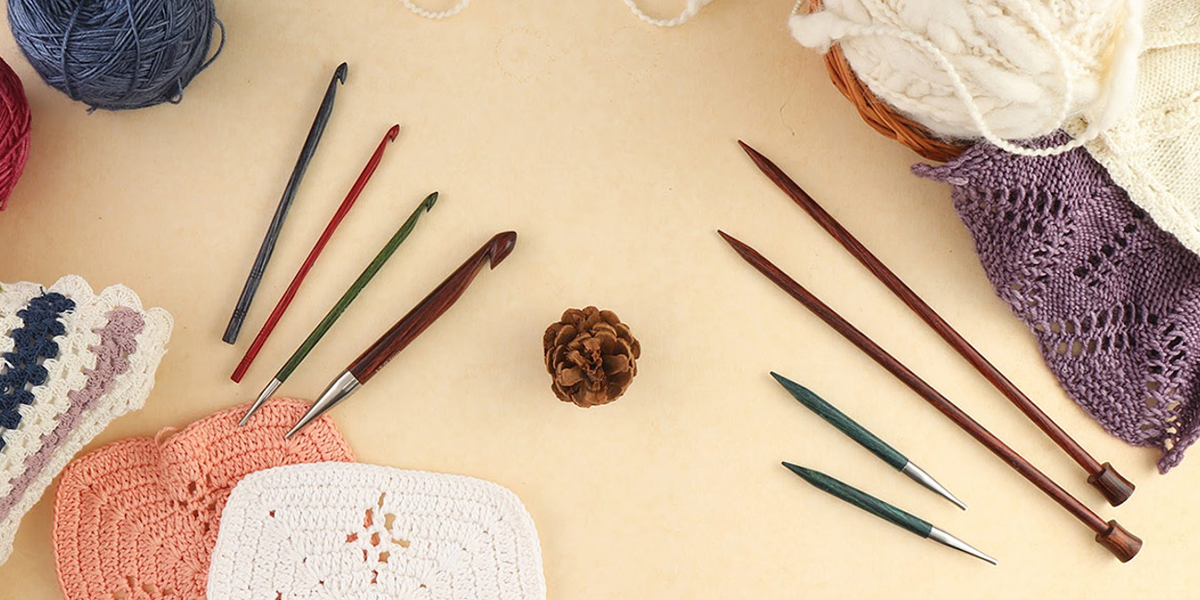
Before we compare the two, let’s take a look at what knitting and crocheting involve or explore the guide on knitting vs crocheting: which craft is better for beginners. If you are new to yarn crafts this will help you decide what to start with. Just make sure to gather supplies accordingly. For knitting, work with circular knitting needles or a set of double-pointed needles. You can also work with single-pointed needles by working the pattern back and forth and later seaming them together. A handy knitting needle set with For crochet, the requirements are simply single-ended crochet hooks or Tunisian crochet hooks that also work for regular crocheting. Essential crafting accessories such as stitch markers, wool needles, a pair of scissors, measuring tapes, needle gauges, etc.
Now for weighing Knitting vs Crochet for a sweater, here’s what you need to know.
1. Textures and Design
Knitting a sweater opens prospects of stitch patterns, from simple garter stitch (all rows of knit stitches), versatile stockinette (alternate rows of knit and purl stitches) to intricate cables and lace (open-airy designs). Colorwork techniques such as Intarsia and Fair Isle offer the ability to create elaborate designs. Our beginner's guide to knitting a first sweater is handy to get started.
Crochet sweaters range from basic stitches to textures like bobbles, popcorn, and shells that add a three-dimensional quality to the fabric.
Both yarn crafts are unique and are up to your preference.
2. Drape
When it comes to drapes, knitted fabrics tend to have more flexibility, making them ideal for sweaters that need to flow nicely over the body. This characteristic is particularly beneficial when there is a lot of shaping involved, like fitted cardigans or pullovers.
Crochet is less drapey and stiff to an extent. This can be a disadvantage when creating lightweight or form-fitting sweaters. However, the drape can be altered with the use of lightweight yarn and open lace stitches. Our guide on how to crochet a sweater assist with a simple sweater.
3. Fabric
Knitted fabrics have a natural stretch. This elasticity also allows for easy shaping of the garment, particularly in areas like the bust, waist, and hips making them forgiving in terms of fit.
Crochet fabric is often denser and heavier. The structured fabric is less likely to stretch out of shape over time. While this can be a benefit for outerwear or winter garments, it might not be ideal for form-fitting sweaters.
4. Yarn Choices
Knitting works well with a broad spectrum of yarns, from fine lace weights to chunky yarns. This flexibility allows knitters to choose the perfect yarn for their desired sweater style, whether it’s a light summer top or a thick winter pullover.
While crochet works well with many yarns, it tends to create a bulkier fabric, which may not be suitable for finer yarns. This can limit the types of yarn you can use for crochet sweaters, particularly if you’re aiming for a lighter or more delicate finish.
5. Time
Knitting and crocheting both are time-extensive projects, especially for large projects like sweaters. However, in comparison, knitting takes more time since each row is built loop by loop. You will require patience and dedication, particularly when working with finer yarns or complex stitch patterns.
Crocheting tends to be faster because each stitch is completed before moving on to the next. Paired with thicker yarns or larger hooks the project works up faster.
Which Technique Should You Choose?
The choice between knitting and crocheting a sweater largely depends on your personal preferences, the type of sweater you want to create, and your skill level.
For Intricate Designs and Versatility
If you’re looking to create a sweater with intricate patterns, fine details, and lots of drape, knitting is the way to go.
For Speed and Structure
If you’re after a quicker project with a more structured fabric, crochet might be your best bet. Crochet is ideal for creating durable, warm sweaters with bold textures.
Combining Both Techniques
For those who enjoy both knitting and crocheting, there’s no rule that says you can’t combine the two techniques in a single project. Many crafters enjoy using knitting for the main body of the sweater and crochet for decorative elements like edgings, collars, or even sleeves. This approach allows you to enjoy the best of both worlds; knitting’s versatility and crochet’s speed and texture.
To better illustrate the differences between knit and crochet sweaters, let’s take a look.
Knit Sweater - The Classic Pullover
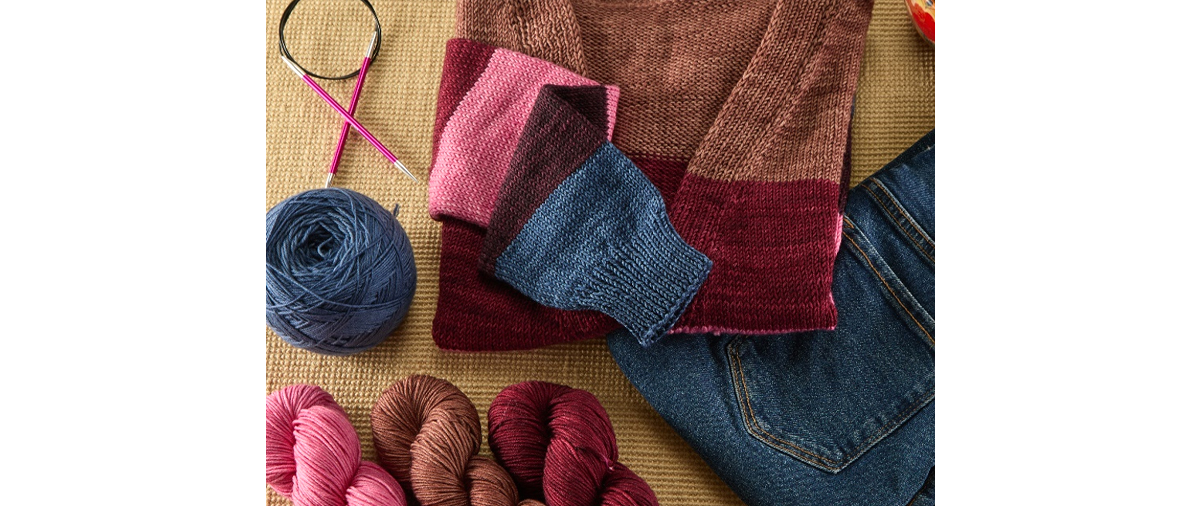
A wardrobe staple, a classic knitted pullover can work intricate details like ribbed cuffs, cables, and colorwork yokes. The natural stretch ensures a comfortable fit while the drape makes the sweater flattering on a variety of body types. Yarns like merino wool in fingering or DK yarns are ideal for all seasons while worsted-weight creates a cozy, yet breathable sweater.
Crochet Sweater - The Chunky Cardigan
A chunky crochet cardigan is ideal for those looking for a quick and satisfying project. Crochet’s speed and dense stitches make it perfect for creating a warm, sturdy garment. This type of project is great for beginners, as it typically involves simple stitches and minimal shaping.
So, grab your knitting needles or crochet hooks, pick out your favorite yarn, and start crafting your perfect sweater today! Our previous blog on fresh knitwear ideas for spring can give you an idea and help you modify them for projects for fall.




